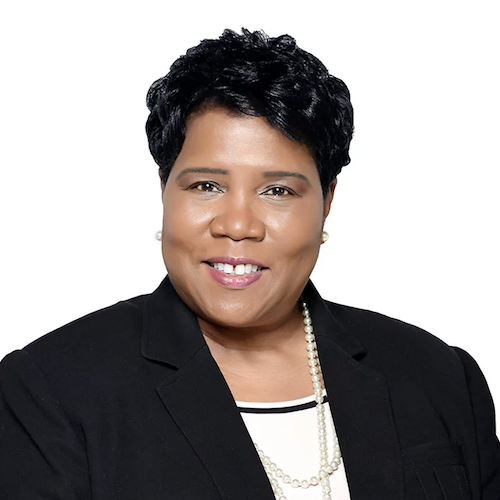When the term “culturally responsive teaching” began to resurface in recent years, I did not really pay attention to its importance because I was no longer working in public schools. I passed it off as issues they needed to address because of the diverse populations and cultures that entered their school doors. I also reasoned that most students in our private school were Black, and all of the other students, including the students from other countries, were all members of our church. It never occurred to me, even as the principal, to consider that one-fifth of the student population and their families were from different countries in Africa. Even our students who do not have dark skin were from a variety of African countries and even Belarus! Culturally responsive teaching has now taken on a more personal meaning and caused me to realize that every child, from every race and demographic, deserves to see themselves represented in the academic program that will forever shape their thinking, life, and future.
Oftentimes, there is no diversity in our private schools and/or communities. However, this homogenous learning environment could be ideal for promoting respectful and authentic discussions about diversity, equity, and inclusion. Students will eventually leave their familiar surroundings, graduate from high school, move into their selected careers, or enter colleges and universities that are tremendously diverse. Having a Christian perspective regarding these topics empowers students to confidently confront any social conflict or injustice they may encounter.
The social conflicts and controversies of today have provoked Christian educators to revisit topics that have been suppressed for decades in America. I use the word “suppressed” because issues of race, culture, and equity have been buried issues that are still sensitive and uncomfortable topics. Fortunately, current events in our nation are forcing us to examine our thinking and true feelings regarding the education of all students. Social injustices, racial discrimination, political divisiveness, and religious factions are challenging us as Christian educators to critically evaluate our thinking and ask questions such as:
- “Aren’t we all ONE in the Body of Christ? Doesn’t this indicate there is no need to focus on topics that seem to divide us?”
- “Do we really need to discuss diversity, equity, and inclusion (again), since we are already mandated to ‘promote respect and compassion for the downtrodden and marginalized?’”
- “Why do we need to rehash culturally responsive teaching when we teach our students to see Christ in ‘the least of our brothers?’”
Yes, we are ONE in the Body of Christ Jesus.
Acts 17:26,
“ And hath made of one blood all nations of men for to dwell on all the face of the earth, and hath determined the times before appointed, and the bounds of their habitation”
John 1:12, 13
“But as many as received him, to them gave he power to become the sons of God, even to them that believe on his name: 13 Which were born, not of blood, nor of the will of the flesh, nor of the will of man, but of God.
Galatians 3:28
There is neither Jew nor Greek, there is neither bond nor free, there is neither male nor female: for ye are all one in Christ Jesus.
God in His infinite wisdom also created us with multiple differences, abilities, gifts, and talents that are visibly seen, expressed, and validated in every walk of life. Throughout the Ministry of Jesus Christ, scriptures prove that He ministered to the needs of people He served (Mt. 8:10, Mk. 7:24, Jn. 4, Lk. 10:25, 17:16). A culturally responsive approach to teaching allows us to authentically and respectfully “see” our brothers and sisters in Christ, without minimizing or devaluing individual differences. This is one of the characteristics that made and makes Jesus so wonderful! Throughout His ministry, He unapologetically taught, healed, and delivered those from diverse cultures and socio-economic backgrounds, regardless of their race or culture.
As Christian educators, we cannot be sensitive or uncomfortable with addressing diversity, equity, and inclusion in our learning environments. Culturally responsive teaching is not “promoting and respecting the downtrodden and marginalized” nor is it “displaying artifacts and recognizing diversity” during a certain month of the year. It may include some of these things, but not as isolated events during a school year. Gloria Ladson-Billings defines culturally responsive teaching as an approach to teaching that “empowers students to maintain cultural integrity, while succeeding academically.” Other researchers such as Geneva Gay, Zaretta Hammond, and Lisa Delpit surmised that, “The use of cultural knowledge, prior experiences, frame of reference, and performance styles of ethnically diverse students make learning more relevant. It teaches to and through strengths of the students. It is culturally validating and affirming.” As we can see from these definitions, culturally responsive teaching is really just sound, truthful, and respectful teaching that incorporates the contributions, cultures, historical backgrounds, and accomplishments of diverse people within the academic curriculum.
Culturally responsive teaching requires planning and preparation in the same way that any new instructional approach or practice is introduced to staff. If you, as an administrator, are considering a more culturally responsive approach in your school, I offer these few basic steps to begin:
- Provide Professional Development to staff on culturally responsive teaching that allows for discussions, questions, and authentic responses. “Buy-in” from school staff is important for success.
- Once “buy-in” has been achieved, plan and prepare how culturally responsive teaching will be incorporated into the school’s academic program.
- It is important to get to know the parents of the diverse students you will educate. Engage them in conversations that go beyond parent-teacher conferences. They will become your greatest allies.
- Establish a relationship of trust between the administrators, staff, and students within your school community. Love never fails. Parents and students will see your “heart” and love before they see anything else.
- Whenever possible, create opportunities to learn about the students’ countries, historical events, cultures, or other interests that are important to them.
- Provide opportunities during class or community discussions, for parents and students to share.
As Christian educators, we have an opportunity to demonstrate culturally responsive teaching from a Christian perspective. We do not have to view this approach as a challenge or something to avoid. The love that Jesus demonstrated to all mankind is our advantage. Yes, culturally responsive teaching will require training on the instructional approach; collaborating with colleagues from various cultures; and taking the time to learn more about the cultures of those we teach. With God’s help, and guidance from the Holy Spirit, we can educate all students in a culturally responsive and ultimately, a more relevant and thought-provoking way.
Image by Gerd Altmann from Pixabay




